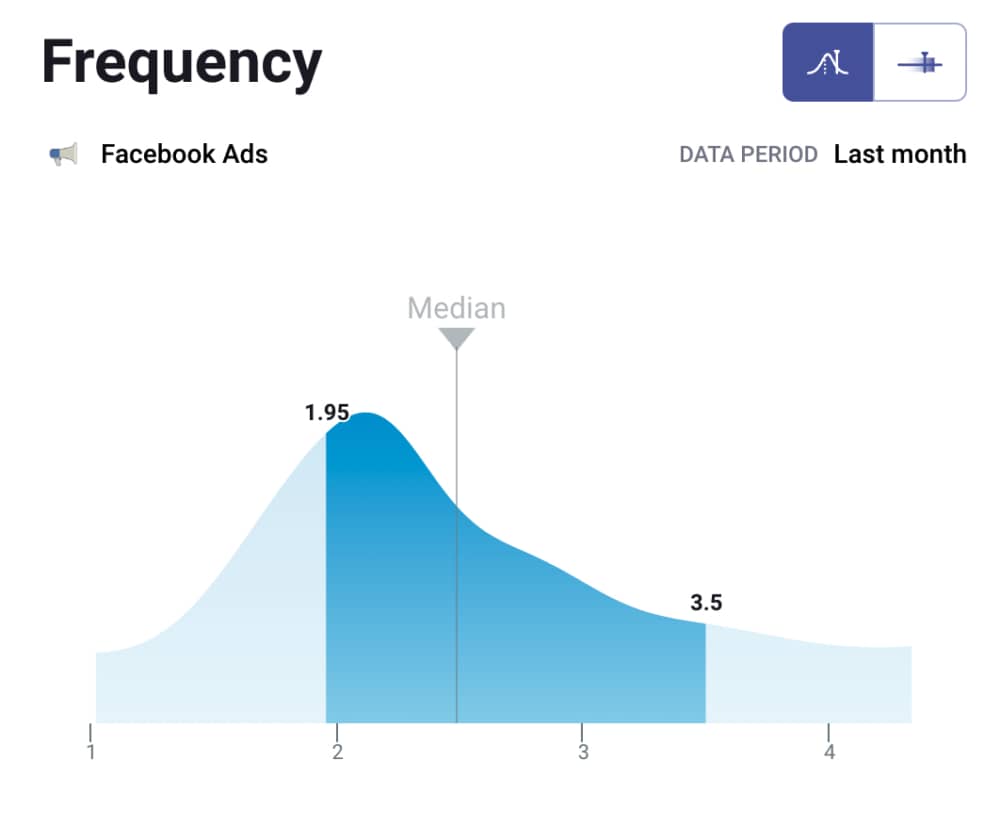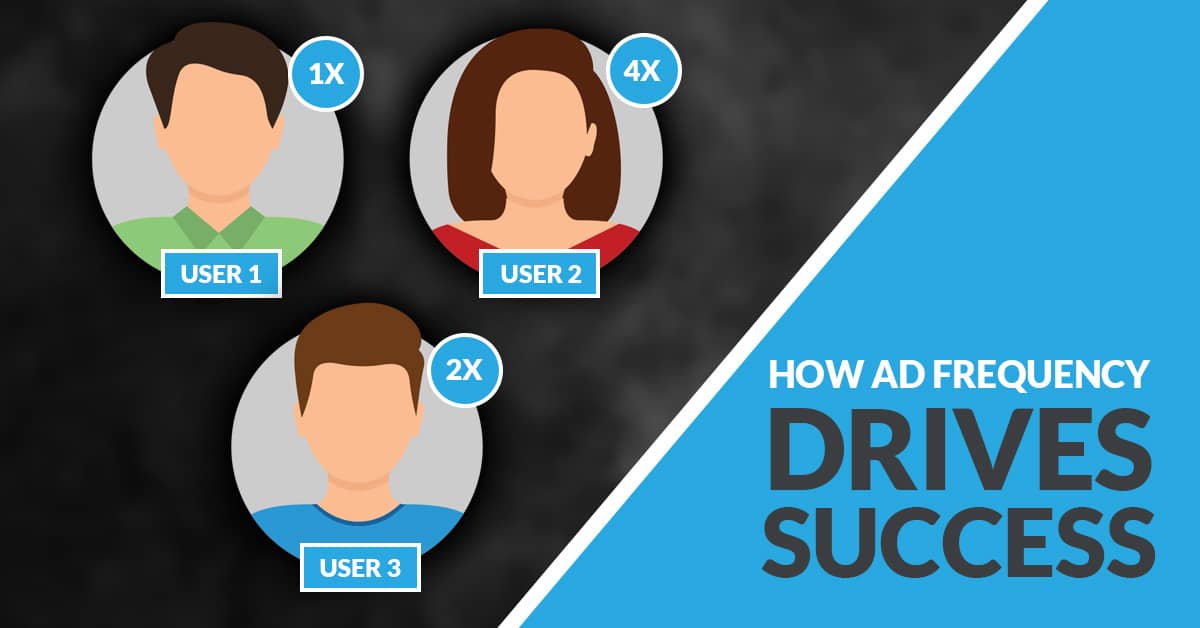What Is Ad Frequency? (and Why You Should Care)
5 Minute Read
Ad frequency is a critical reporting metric for advertising campaigns. CMOs look at it all the time. However, agencies for service-based businesses often fail to report on ad frequency.
Why does ad frequency matter? As an advertiser, wouldn’t you want to know how many times people are seeing your ad (and whether or not they engage with it)?
Consumers see tens of thousands of ads every day. Brands need to hit the sweet spot between serving enough ads to cut through the noise but not so many that the consumer gets turned off. The ad frequency metric can help you find this sweet spot and ensure that your ads are being served the right number of times.
Below, the Advertising Experts at Twelve Three Media discuss why you should care about ad frequency, the common problems advertisers and agencies face when reporting on ad frequency, and how sophisticated reporting tools can overcome these challenges.
So, What Is Ad Frequency?
Ad frequency refers to the number of times an advertisement is displayed to a particular user within a given time period. Usually measured in impressions (i.e., the number of times an ad is seen), it helps advertisers understand how often their ads are being shown to potential customers.
It is important to measure ad frequency across all of your advertising campaigns, including:
- Online Display Advertising
This includes banner ads, sidebar ads, and other visual advertisements displayed on websites and apps. Advertisers track ad frequency to manage how often their ads appear to users while they browse online. - Social Media Advertising
Platforms like Facebook, Instagram, and LinkedIn offer advertising options where advertisers can target specific demographics and interests. Ad frequency is crucial here to manage the number of times users see sponsored posts in their feeds. - Video Advertising
Advertisers running campaigns on platforms like YouTube or through video ads on websites often track ad frequency to ensure they’re not overwhelming viewers with too many interruptions. - OTT and CTV
Ad frequency on over-the-top (OTT) and connected TV (CTV) campaigns is typically tracked by monitoring how many times a specific ad is displayed to individual viewers across streaming platforms. This data allows advertisers to manage the number of times their ads are shown to ensure effective reach without overwhelming or annoying their target audience. - Television and Radio Advertising
Although less precise than digital advertising, traditional media campaigns also consider ad frequency. The goal is to strike a balance between reaching the target audience multiple times without burning through your budget.
Like Goldilocks, it’s important to strike a balance in your digital and traditional ad campaigns; you don’t want to do too little, and you don’t want to do too much. Ad frequency helps you determine what is too little and too much.
The problem we see is that agencies often fail to report on ad frequency. Whether this is due to a lack of data or a lack of effort (or a combination of the two), they do their clients a huge disservice by not providing accurate insights on their campaigns.
Wondering if you’re getting accurate reports? Discover the marketing metrics you need to know!
Why Does Ad Frequency Matter?
Most advertisers don’t put all of their marketing eggs in one basket. They invest in multiple ad campaigns across different channels and platforms, such as social media ads, advertising on connected TV, traditional and digital out-of-home ads, etc. Ideally, all of these campaigns work together to achieve your advertising goals.

The problem is that buying ads from multiple media vendors makes it extremely difficult to control ad spend and frequency. Ad fatigue can set in very quickly if you’re hitting the same audience over and over again across multiple channels with no variation in the messaging.
What Is the Right Ad Frequency?
On average, consumers need to encounter a brand’s message a minimum of 7 times before they will take a desired action. If you don’t control ad frequency, some consumers may encounter your ads only a couple of times while others will become tired of your ads through excessive repetition.
Carefully monitoring ad frequency reduces waste. It is also crucial for controlling costs, optimizing conversions, and maximizing return on ad spend. What even the most conscientious advertisers and agencies struggle with, however, is accurately managing and tracking ad frequency across multiple advertising channels and platforms.
The Solution to Optimizing Ad Frequency
Having been in the industry for decades, Twelve Three Media understands the frustration of reporting and trying to manage ad frequency across multi-channel campaigns. Fortunately, our advertising expertise and the extensive budgets we manage on our clients’ behalf have enabled us to secure a seat at The Trade Desk.
In our experience, Trade Desk is the premier solution for omnichannel advertising. One of the things we like best is the emphasis on a consolidated buying environment and the ability to manage ad frequency across channels and platforms for individual consumers and households.
According to Trade Desk’s own data, “marketers who managed frequency across a single environment achieved six times more effective reach.” Reach is another essential metric for advertisers that measures the number of people in the audience for a particular ad.
Our in-house experts can confirm that managing ad frequency through Trade Desk helps extend the reach of ads while ensuring that target audiences are not under- or overexposed to the ad. This in turn helps advertising dollars go further.
But the most advanced tools won’t help if you don’t have a complete understanding of the media buying and serving process. At Twelve Three Media, we have an in-depth understanding of how the various supply vendors, placements, and networks work together to deliver ads, as well as how setting frequency rules affects the delivery of ads at the singular viewer or household level. This takes more than setting a frequency cap; it requires a lot of experience and knowledge of how the media landscape works.
Start Tracking Ad Frequency Across Your Media Buy
You should never rely solely on impressions when evaluating the success of an ad campaign. Suboptimal performance (e.g., watching 5 seconds of a video ad and skipping the rest) and placement (e.g., a banner ad at the bottom of a website) may be counted as impressions. If you don’t optimize ad frequency and return on ad spend, you could be wasting hundreds upon thousands of dollars every month.
Ad frequency helps you understand how often potential customers see your ads. But, without clear data, you don’t know (a) how often your ads are being seen or (b) whether they are having the desired effect.
You and/or your agency could delve into ad frequency data for each vendor. Or you could partner with an agency that uses industry-leading tools for setting ad frequency, tracking key advertising metrics, and managing your budget all in one place.
